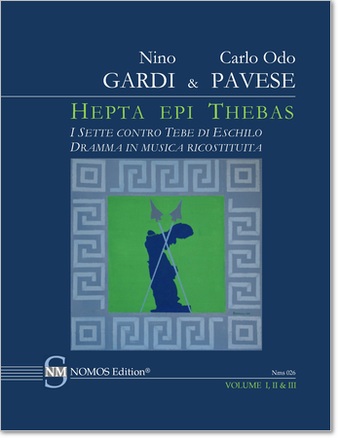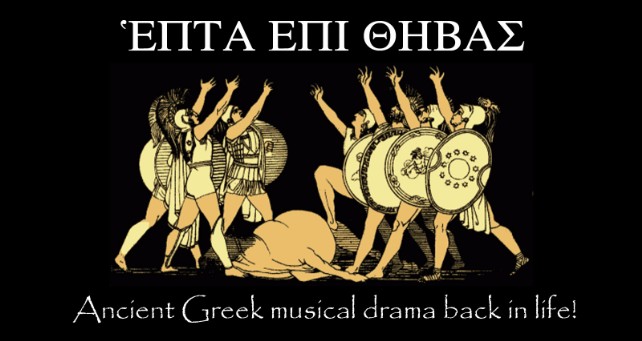Nms 026 GARDI-PAVESE Hepta epi Thebas - NOMOS Edition
Main menu:

Additional Information

An extraordinary music written in the musical style of ancient Greece, as close as possible to the true style of the time.
After
a twenty year long philological and historical research, Carlo Odo
Pavese, an eminent scholar on ancient Greek poetry and poetic tradition,
and the composer and musicologist Nino Gardi have developed a
scientific method, mainly based on the metrical patterns of ancient
Greek verse and on the melodic accents of ancient Greek language, which
finally makes possible writing music in an almost authentic ancient
Greek style.
Ancient
Greek tragedies were real musical plays, where the actors intoned
trimeters as a kind of recitative and the chorus sang strophes and
antistrophes and danced to them accompanied by lyre and aulos.
Nevertheless, the tragic texts have been handed down to us without any
musical notation. Only three fragments of papyrus make an exception, but
they date to about two centuries later than the texts and are anyway
insufficient to significantly evoke the music of the plays.
A new criterion of musicological research, applied here to the text of The Seven against Thebes,
has made a likely reconstitution, or reconstruction, possible. What
could be recovered, if not the exact original pattern, is at least the
musical method and manner by which those dramas were performed.
Ancient
Greek vowels were pronounced as long or short, tonic or atonic. Unlike
most modern languages, syllables were pronounced not with a different
stress, but with a different quantity (i.e. duration) and a different
pitch. Such prosody had a phonemic value, as it was part of the meaning
of words, along with the sequence of phonemes.
It has then become
clear that poetry could be set to music only by a method suited to its
metre and tonality. The metre gave the rhythm, while the melodic accents
potentially contained the melody. The natural tone intervals only
needed to be regulated by a musical nomos chosen for the occasion, that is by a nomos applied to the chosen tropos and musical genus, for the melody to be almost automatically created by it.
On
such grounds the authors have made a new survey of the ancient theory
and its sources. They have then attempted the task of rendering the
musical structure of the drama, aiming at proposing a likely sample of
it both for the judgement of scholars and for the audience of a cultured
public.
Setting:
The Cadmeia, the Acropolis at Thebes
Characters:
Eteocles
young prince, leader of the Thebans
Messenger
explorer sent by Eteocles to the enemy camp
Choir of Theban Maids or Choryphaea
a Theban woman
Six defending heroes
(non-speaking persons)
Theban people
(supers)
---
Volume I
Preface
Introduction to the Drama
Editorial Note
Greek Text and Italian Translation
Metrical Notes
Musical Reconstitution
Diagram of the Tropoi
Performance Directions & Illustrations
Subject Index
Volume II
Legenda
Score
Authors' Curricula
Volume III
English & German translations